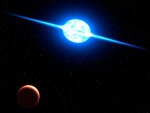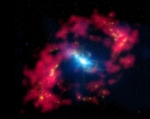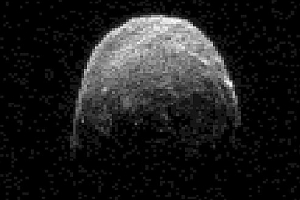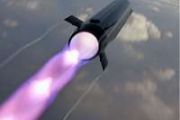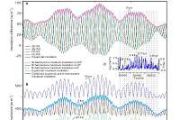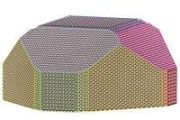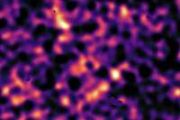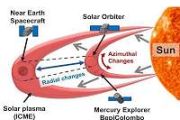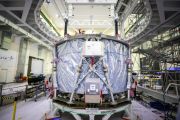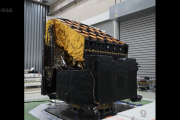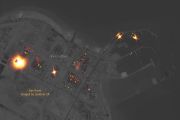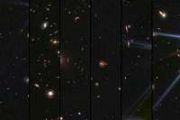
Alistair Dimitriou
New Element 112 is Named Copernicium
IUPAC has officially approved the name copernicium, with symbol Cn, for the element of atomic number 112.
Priority for the discovery of this element was assigned, in accordance with the agreed criteria, to the Gesellschaft für Schwerionenforschung (GSI) (Center for Heavy Ion Research) in Darmstadt, Germany. The team at GSI proposed the name copernicium which has now been approved by IUPAC. Sigurd Hofmann, leader of the GSI team stated that the intent was to "salute an influential scientist who didn't receive any accolades in his own lifetime, and highlight the link between astronomy and the field of nuclear chemistry."
The name proposed by the Gesellschaft für Schwerionenforschung (GSI) lies within the long tradition of naming elements to honor famous scientists. Nicolaus Copernicus was born on 19 February 1473, in Torún, Poland and died on 24 May 1543, in Frombork/Frauenburg also in Poland. His work has been of exceptional influence on the philosophical and political thinking of mankind and on the rise of modern science based on experimental results. During his time as a canon of the Cathedral in Frauenburg, Copernicus spent many years developing a conclusive model for complex astronomical observations of the movements of the sun, moon, planets and stars. His work published as “De revolutionibus orbium coelestium, liber sixtus” in 1543 had very far reaching consequences. Indeed the Copernican model demanded major changes in the view of the world related to astronomy and physical forces and well as having theological and political consequences. The planetary system introduced by Copernicus has been applied to other analogous systems in which objects move under the influence of a force directed towards a common centre. Notably, on a microscopic scale this is the Bohr model of the atom with its nucleus and orbiting electrons.
The Recommendations will be published in the March issue of the IUPAC journal Pure and Applied Chemistry and is available online at Pure Appl. Chem., 2010, Vol. 82, No. 3, pp. pp 753-755 (doi: 10.1351/PAC-REC-09-08-20). Priority of claims to the discovery of the element of atomic number 112 was determined by a joint working party of independent experts drawn from the International Union of Pure and Applied Chemistry (IUPAC) and the International Union of Pure and Applied Physics (IUPAP). The group’s report was published in July 2009, Pure Appl. Chem., 2009, Vol. 81, No. 7, pp. 1331-1343 (doi: 10.1351/PAC-REP-08-03-05). The Joint Working Party will issue a second report, dealing with claims for the discovery of elements with atomic numbers in the range 113 to 118, in the near future.
IUPAC was formed in 1919 by chemists from industry and academia. For more than 90 years, the Union has succeeded in fostering worldwide communications in the chemical sciences and in uniting academic, industrial and public sector chemistry in a common language. IUPAC is recognized as the world authority on chemical nomenclature, terminology, standardized methods for measurement, atomic weights and many other critically evaluated data. More information about IUPAC and its activities is available at www.iupac.org.
For questions, contact Dr. Terrence Renner, Executive Director, at <>.
Inital images from NASA's Curiosity landing site
Images of Mars never cease to amaze me. I yearn to see the day when we see images of man on Mars.
This is the first 360-degree panorama in color of the Gale Crater landing site taken by NASA's Curiosity rover. The panorama was made from thumbnail versions of images taken by the Mast Camera.
Scientists will be taking a closer look at several splotches in the foreground that appear gray. These areas show the effects of the descent stage's rocket engines blasting the ground. What appeared as a dark strip of dunes in previous, black-and-white pictures from Curiosity can also be seen along the top of this mosaic, but the color images also reveal additional shades of reddish brown around the dunes, likely indicating different textures or materials.
The images were taken late Aug. 8 PDT (Aug. 9 EDT) by the 34-millimeter Mast Camera. This panorama mosaic was made of 130 images of 144 by 144 pixels each. Selected full frames from this panorama, which are 1,200 by 1,200 pixels each, are expected to be transmitted to Earth later. The images in this panorama were brightened in the processing. Mars only receives half the sunlight Earth does and this image was taken in the late Martian afternoon.
List of Space Agencies
Interesting list of Space Agencies in Wikipedia:
CERN is about to announce discovery of Higgs boson particle
CERN calls for patience over speculation it 'is about to announce discovery of Higgs boson particle'
This is why I love Physics!
Fastest Rotating Star Found in Neighboring Galaxy
This artist's concept pictures the fastest rotating star found to date. The massive, bright young star, called VFTS 102, rotates at a million miles per hour, or 100 times faster than our sun does. Centrifugal forces from this dizzying spin rate have flattened the star into an oblate shape and spun off a disk of hot plasma, seen edge on in this view from a hypothetical planet. The star may have "spun up" by accreting material from a binary companion star. The rapidly evolving companion later exploded as a supernova. The whirling star lies 160,000 light-years away in the Large Magellanic Cloud, a satellite galaxy of the Milky Way.
Nasa telescopes have unearthed a scowling eye in deep space
Images from three Nasa telescopes seem to have unearthed a scowling eye in deep space - but it's actually a nearby galaxy - NGC 4151 - with gas interacting with the growing black hole at its centre.
The white 'pupil' is the black hole - and the red 'brow' is hydrogen, a gravity-warped structure at the galaxy's heart that includes material falling towards its centre.
The blue is X-rays which scientists are studying to understand how such black holes interact with the gas around them.
What seems to be an 'evil eye' is in fact hydrogen surrounding the heart of a galaxy with a supermassive black hole at its centre - NGC 4131, one of the nearest galaxies with an actively growing black hole
'It looks like a really evil eye to me,' the blog Gizmodo said this week. 'It's a photo of the central region of NGC 4151, a spiral galaxy 43 millions light years away from Earth.'
NGC 4151 is one of the nearest galaxies that contains an actively growing black hole.
It offers one of the best chances of studying the interaction between an active supermassive black hole and the surrounding gas of its host galaxy.
Such interaction, or feedback, is recognized to play a key role in the growth of supermassive black holes and their host galaxies.
Scientists are now studying why such a huge amount of X-rays (blue) is released - in an effort to understand how supermassive black holes interact with the gases around them.
The resemblance to a huge, evil eye seems to be pure coincidence.
The scowling red 'eyebrow' is actually hydrogen detected by radio observations with the NSF's Very Large Array.
The composite image shows the central region of the spiral galaxy NGC 4151 in a combination of X-rays (blue) from the Chandra X-ray Observatory with optical data (yellow) showing positively charged hydrogen (H II) from observations with the 1-meter Jacobus Kapteyn Telescope on La Palma.
The yellow blobs around the red ellipse are areas where stars recently formed.
source and read more: www.dailymail.co.uk
Huge asteroid closer than Moon on 8th Nov 2011 !!
A huge asteroid about the size of an aircraft carrier will zoom past our planet next week, flying between the Earth and the orbit of the moon when it flies by on Tuesday (Nov. 8).



![Star cluster NGC 290 [Hubble] [credit: ESA & NASA]](/media/k2/items/cache/42770aa1de64ddfe6105cdd213adfa9d_Generic.jpg)
